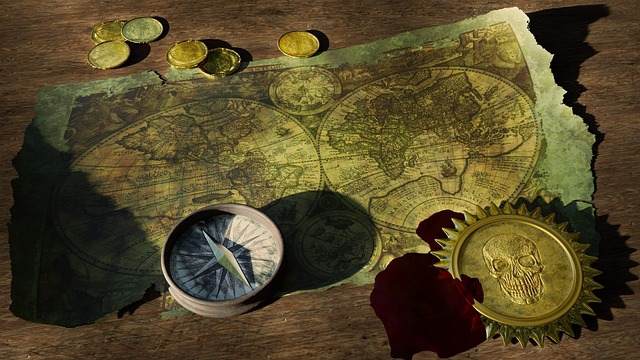Tucked away off the southern shores of Nova Scotia, Canada, lies a quiet patch of land that has captivated adventurers, researchers, and conspiracy theorists for over 200 years—Oak Island. Despite its modest size, this island has become legendary, thanks to the enigmatic site known as the Money Pit. Believed to hide a vast treasure beneath layers of engineered traps and tunnels, the pit has defied excavation efforts since its discovery. Yet, people continue to be drawn to the island’s mystery, hoping to crack the code and uncover what lies beneath the soil. The legend of Oak Island isn’t just about treasure—it's about ambition, obsession, and the unknown.
The story begins in 1795 when a young man named Daniel McGinnis noticed a peculiar depression in the ground beneath an old oak tree. Hanging from one of the tree’s limbs was a rotted tackle block, suggesting that something had once been lowered—or raised—from the pit below. With the help of two friends, McGinnis began digging. A few feet down, they struck a layer of flagstones, followed by layers of wooden planks placed at regular intervals. Each new level appeared deliberately engineered. This wasn’t just a hole—it was a construction, one that hinted at human intent and possibly, hidden riches. Thus began the Oak Island treasure hunt.
Over the years, dozens of expeditions have tried to unlock the secrets of the Money Pit. Teams have unearthed stone markers, odd symbols, metal fragments, and pieces of chain, further fueling the belief that something of value lies buried beneath. The most famous artifact to date is a stone inscribed with mysterious characters, which many believe is a coded message pointing to treasure. Although interpretations vary, one popular translation claimed it read: “Forty feet below, two million pounds lie buried.” Whether or not the translation is accurate, the sense of anticipation it created was very real.
Numerous theories have emerged over time about what could be hidden on Oak Island. Some believe the treasure belongs to the notorious pirate Captain William Kidd, who was known to bury loot along the Atlantic coast. Others think the pit contains sacred religious relics like the Holy Grail or the Ark of the Covenant, hidden away by the Knights Templar to keep them safe from enemies. There are even theories suggesting that documents proving Shakespeare wasn’t the real author of his plays are buried in a secret vault beneath the island. These stories have taken root in popular imagination, creating an air of historical importance around the mystery.
But the search for treasure hasn’t been without peril. Oak Island carries a deadly legend—that seven people must die before the treasure is found. So far, six individuals have lost their lives in various accidents linked to excavation attempts. From drowning in water-filled tunnels to fatal equipment malfunctions, the island has earned a reputation for being as dangerous as it is mysterious. These tragedies have only deepened the mythos, suggesting that something—or someone—may be protecting the island’s secrets.
Efforts to uncover Oak Island's mysteries have continued into the modern day, driven not just by enthusiasts, but by cutting-edge technology and determined researchers. One of the most notable recent attempts is led by brothers Marty and Rick Lagina, who have invested heavily in advanced equipment, excavation teams, and historical research. Their findings have added new layers to the legend. They’ve discovered ancient coins, pieces of parchment, and a lead cross that predates the 15th century. While these discoveries haven’t yet led to the ultimate prize, they have kept the mystery alive—and even expanded it.
One particularly perplexing challenge that has stymied every dig is the island’s engineered flood tunnels. Multiple shafts have suddenly filled with water, often right when crews seem closest to breaking through to something substantial. These flood systems appear to be designed intentionally, acting as booby traps to prevent anyone from reaching the final chamber. Despite numerous efforts to seal or reroute these tunnels, they continue to thwart progress, suggesting that whoever built the Money Pit had exceptional foresight and technical skills.
What makes Oak Island so unique isn’t just the possibility of treasure—it's the sheer scale of effort that appears to have gone into hiding whatever lies beneath. If treasure exists, who had the resources and motive to bury it so deeply and so securely? Was it a group with religious ties? Pirates seeking a permanent hiding spot? Or is it all a misunderstood geological formation, turned into legend through centuries of speculation? Each theory brings its own flavor of intrigue, and each new find brings the world one step closer to a truth that may be stranger than fiction.
In recent years, Oak Island has become more than just a site of historical curiosity—it’s become a symbol of mankind’s relentless curiosity and our undying hope that some mysteries can be solved. With every new season of exploration, the island continues to yield small pieces of a larger puzzle. But that’s also what makes it so captivating. Oak Island isn’t about instant gratification—it’s about the long game. It challenges our patience, tests our beliefs, and fuels our imagination.
Despite the investment of millions of dollars and hundreds of man-hours, the treasure—if it exists—remains untouched. Still, the quest endures, because Oak Island represents more than material wealth. It’s a story, a legacy, and a lesson in perseverance. It teaches us that sometimes, the journey is just as important as the destination. And in a world where most mysteries can be solved with a quick Google search, Oak Island offers something increasingly rare: a real-life enigma that refuses to be tamed.
Whether the truth is revealed tomorrow or a hundred years from now, the legend of Oak Island will continue to captivate the hearts and minds of those brave—or curious—enough to seek it.
